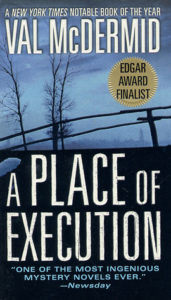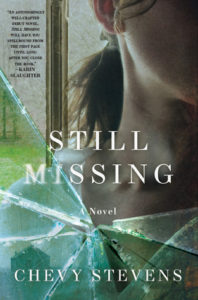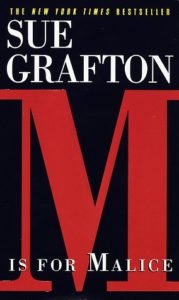I love reading mysteries because a well written mystery delves deeply into the depths of the human heart and psyche. I’m in partial agreement with Beth O’Brien, who says:
For me, the mystery books to read are personal. I want to know what happens to those directly affected. The family, the friends, the victims themselves. The general fiction section is where you’ll find the kind of mysteries I like.
She had me right up until that last sentence. While it’s true that some very good mysteries appear on the general fiction shelves, more often the best mysteries are found right where you’d expect them to be, on the mystery shelves. The main reason for this is that, once a writer has written a mystery and been categorized as a mystery writer, most book stores and libraries will continue to put all that author’s subsequent books in the same spot.
Like O’Brien, I don’t care for cozy mysteries (the kind in which, if the mystery were a play, the crime would occur off stage). And I’m not a big fan of the drawing room mystery, in which the sleuth, whether professional or amateur, gathers all the possible suspects in the drawing room and explains why each, one by one, isn’t the killer; the last person left is therefore the guilty party, and the sleuth proceeds to explain how the killer did the deed and how the clever detective figured the whole complicated mess out.
And I don’t like horror. I recently read two novels that were described as psychological thrillers that made me realize exactly what my definition of horror is: literature that uses a supernatural or inhuman phenomenon to deliver the promised twist at the end. (I’m not going to name those two novels so as not to spoil their endings for anyone who hasn’t read them yet.) It’s human motivation and interaction that I’m interested in, not goblins, demons, or other malevolent but external forces.
Finally, O’Brien says that she doesn’t like procedurals or courtroom dramas, and I disagree with her there as well. Procedurals, which pit a detective (who may or may not be a police investigator) against a bad guy or gal, frequently provide a look into the minds of both sides of that human equation. Courtroom dramas do the same, and often at the same time examine how the legal system works and how it affects human behavior.
Ultimately, though, O’Brien and I agree on the most basic appeal of a mystery. For her, it’s “about the people, the character development,” and I second that. The best mysteries are not pure plot, with one extreme event following another, careening off in seemingly endless directions. My purpose in reading a mystery isn’t to see what wild, unforeseen surprise the writer can throw at me. I read mysteries to learn about why people do what they do, how they interact with others, and what drives them. The best mysteries display as much character development as plot.
Here, then, are five mysteries that both interested and enlightened me. And you might want to click on the link to O’Brien’s article, where she offers five more.
A Place of Execution by Val McDermid
 In the winter of 1963 in England, serial killers Myra Hindley and Ian Brady began killing children. Val McDermid uses this historical event as the starting point for her novel, in which a 13-year-old girl, Alison Carter, disappears in a small, rural English community distrustful of outsiders. The investigation falls to George Bennett, a young, newly promoted inspector. Although Alison’s body was never found, someone was convicted and executed for her murder. Despite this seemingly successful conclusion, the case continued to haunt Bennett for the rest of his career.
In the winter of 1963 in England, serial killers Myra Hindley and Ian Brady began killing children. Val McDermid uses this historical event as the starting point for her novel, in which a 13-year-old girl, Alison Carter, disappears in a small, rural English community distrustful of outsiders. The investigation falls to George Bennett, a young, newly promoted inspector. Although Alison’s body was never found, someone was convicted and executed for her murder. Despite this seemingly successful conclusion, the case continued to haunt Bennett for the rest of his career.
Decades later, Bennett tells the story of this case to journalist Catherine Heathcote. But just as Heathcote’s book on the case is about to be published, Bennett calls to tell her to stop. When he tells her he has new information but refuses to explain, Heathcote undertakes her own investigation of the case.
I’ve chosen this one of McDermid’s novels because it has stuck with me for years, but almost any of her books is worth reading, particularly her stand-alone novels. This book demonstrates how effective a procedural mystery can be.
Still Missing by Chevy Stevens
 Annie O’Sullivan, a 32-year-old real estate agent, is about to close up an open house at the end of the day when a van pulls up. It’s been a slow day, and she hopes this last visitor might just be the buyer she needs. Instead, the van holds a psychopath who kidnaps Annie and holds her captive in a remote cabin for a year before she manages to escape. (This all becomes clear right at the beginning of the book, so I’m not giving anything away here.)
Annie O’Sullivan, a 32-year-old real estate agent, is about to close up an open house at the end of the day when a van pulls up. It’s been a slow day, and she hopes this last visitor might just be the buyer she needs. Instead, the van holds a psychopath who kidnaps Annie and holds her captive in a remote cabin for a year before she manages to escape. (This all becomes clear right at the beginning of the book, so I’m not giving anything away here.)
Annie narrates most of the book as recordings of her therapy sessions after her escape. The last part describes her efforts to re-integrate back into society after her terrible experience. As harrowing as this sounds, Still Missing is a story of survival and resilience that I still think about now, several years after reading it.
”M” Is for Malice by Sue Grafton
 This novel, from the middle of Grafton’s alphabet mysteries featuring PI Kinsey Millhone, is one of the best. When a family patriarch dies and leaves his estate to be divided equally among his four sons, three of them hire Kinsey to locate their long-lost brother, the black sheep of the family, who has been gone for 20 years.
This novel, from the middle of Grafton’s alphabet mysteries featuring PI Kinsey Millhone, is one of the best. When a family patriarch dies and leaves his estate to be divided equally among his four sons, three of them hire Kinsey to locate their long-lost brother, the black sheep of the family, who has been gone for 20 years.
Kinsey is a good investigator, so find him she does. However, after witnessing the dysfunctional relationship between the other three brothers, she advises the prodigal son to consider carefully whether he wants to return to the fold with three men who would obviously rather split the inheritance three ways than four.
”M” Is for Malice aptly demonstrates how deftly Sue Grafton creates credible, complex characters and how the mind of an investigator can be just as compelling as the mind of a villain.
Mystic River by Dennis Lehane
 Sean Devine, Jimmy Marcus, and Dave Boyle were childhood friends in a blue-collar neighborhood in Boston. But one day a strange car pulled up while they were out on the street and tried to pick them up. Sean and Jimmy didn’t get in, but Dave did. Dave later returned, but something had happened to him that drove him away from his friends and changed his life forever.
Sean Devine, Jimmy Marcus, and Dave Boyle were childhood friends in a blue-collar neighborhood in Boston. But one day a strange car pulled up while they were out on the street and tried to pick them up. Sean and Jimmy didn’t get in, but Dave did. Dave later returned, but something had happened to him that drove him away from his friends and changed his life forever.
Years later, Dave Boyle is accused of killing Jimmy Marcus’s daughter, and Sean Devine is the police officer in charge of the murder investigation. This character-driven crime novel examines childhood, friendship, community, and the power of secrets. All the characters are sharply and complexly drawn in a story that will stay with you long after you turn the last page.
There’s a good movie, but read the book first.
The Good Girl by Mary Kubica
 Mia Dennett, in her early 20s, is a well-liked art teacher at an alternative school in Chicago. She’s the daughter of a prominent but cold and demanding judge and a socialite mother. Mia’s family can’t understand why she chooses to live in the city instead of in their large home in a much safer suburban neighborhood.
Mia Dennett, in her early 20s, is a well-liked art teacher at an alternative school in Chicago. She’s the daughter of a prominent but cold and demanding judge and a socialite mother. Mia’s family can’t understand why she chooses to live in the city instead of in their large home in a much safer suburban neighborhood.
When Mia’s not-too-steady boyfriend fails to meet her at a bar in the city one night, Mia leaves the bar with a stranger who calls himself Colin. A notorious criminal has hired Colin to kidnap Mia for him, but Colin soon decides to hide Mia in a remote cabin in Minnesota instead of turning her over to his employer. Mia’s disappearance isn’t discovered until Monday morning, when she doesn’t show up for work. Most of the narration shifts between several point-of-view characters—Mia’s mother, Eve; Gabe Hoffman, who’s in charge of the police investigation; and Colin—as the search continues with very few leads.
Such use of multiple points of view characterizes many works of contemporary fiction and reflects the fact that there are as many sides to any story as there are participants in the events. Novels that present several points of view show readers how different characters perceive the significance of events and how they interact with other characters. This approach to storytelling allows writers and readers to explore fully the deliciously messy and complex workings of human nature.
© 2017 by Mary Daniels Brown

